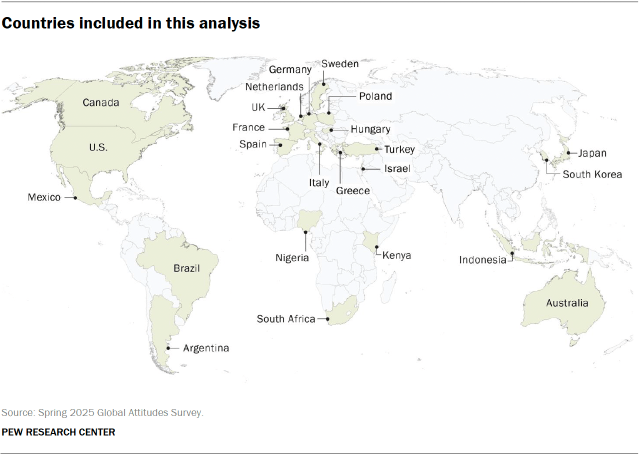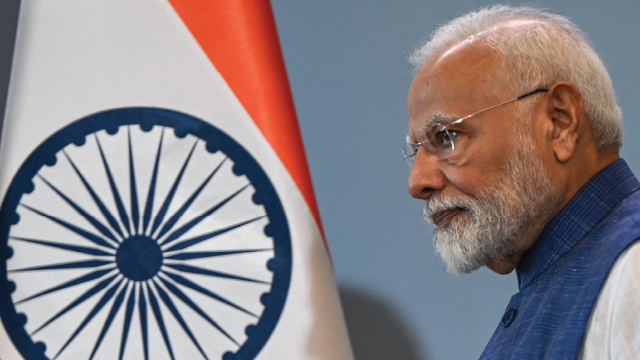
People in 24 countries view India slightly more positively than negatively, according to a Pew Research Center survey conducted Jan. 8-April 26, 2025. A median of 47% across the 24 countries have a favorable opinion of India, while a median of 38% have an unfavorable view. Another 13% do not offer an opinion.
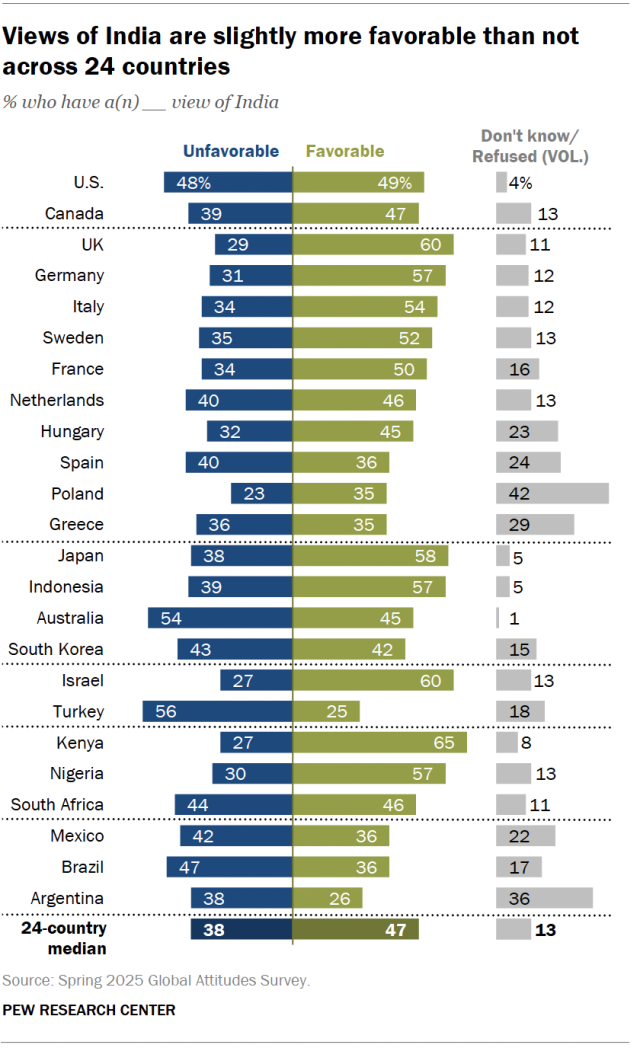
The survey was conducted before an April attack on tourists in India-controlled Kashmir led to fighting between India and Pakistan, and before U.S. President Donald Trump announced increased tariffs on goods imported from India.
In roughly half of the surveyed countries, more people have a positive view of India than a negative one. Opinion is highly favorable in Kenya, the United Kingdom and Israel, where six-in-ten or more say they have a favorable opinion of India. Majorities in Germany, Japan, Indonesia and Nigeria also say they have a favorable view of the country.
Opinion is most negative in Turkey and Australia, where over half say they have an unfavorable view of India. Views also lean more negative than positive in Argentina and Brazil. And in some countries, including the U.S. and South Korea, opinion of India is roughly evenly divided.
How views of India have changed over time
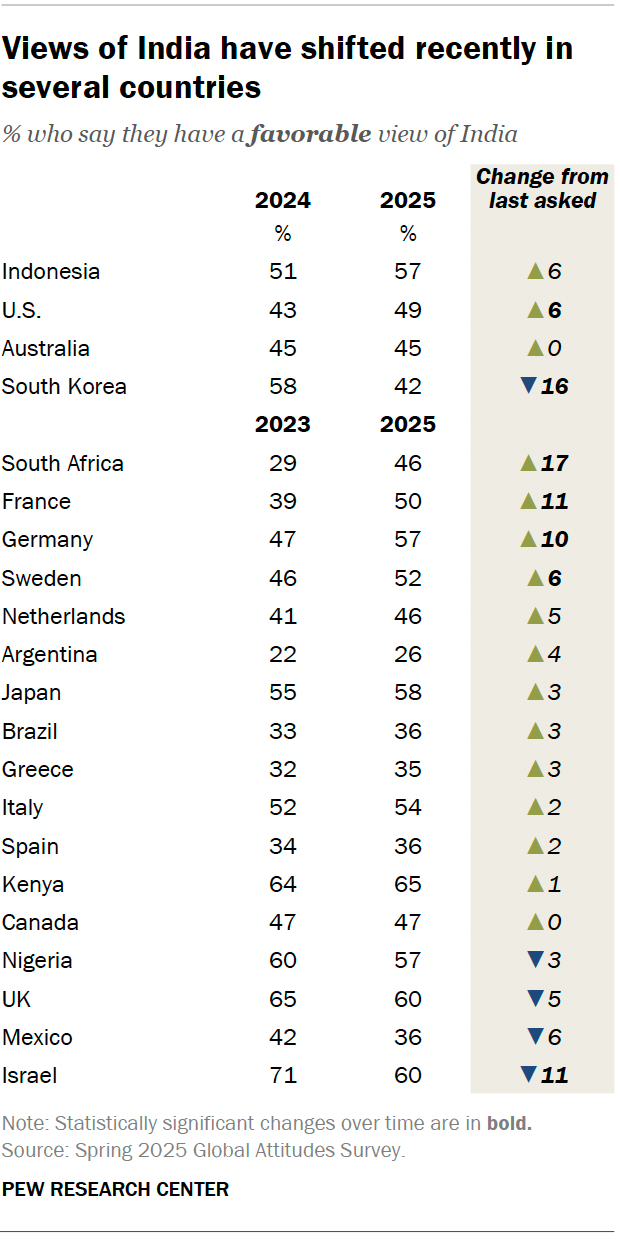
Since we last asked this question, views of India have grown more favorable in several countries and less favorable in a few.
In South Africa, where respondents have typically expressed more critical views of India, 46% say they have a favorable view. That is a record high since we first asked the question in 2008 and up 17 percentage points since 2023. In fall 2023, Indian Prime Minister Narendra Modi announced an intention to strengthen ties with African nations such as South Africa. And in 2024, the India-South Africa Chamber of Commerce launched with the goal of deepening economic relations.
Across a few European nations, favorability of India has ticked up, including by double digits in France and Germany.
We asked about favorability of India as recently as last year in the Asia-Pacific region. In Indonesia and Australia, views have not changed significantly. In South Korea, though, favorability has fallen by 16 points from 2024 and is now at its lowest point since we first asked the question in 2007. The 2025 survey took place after India reopened its embassy in North Korea in December 2024.
Favorability has also fallen in Israel by 11 points since 2023, but a majority still hold positive views.
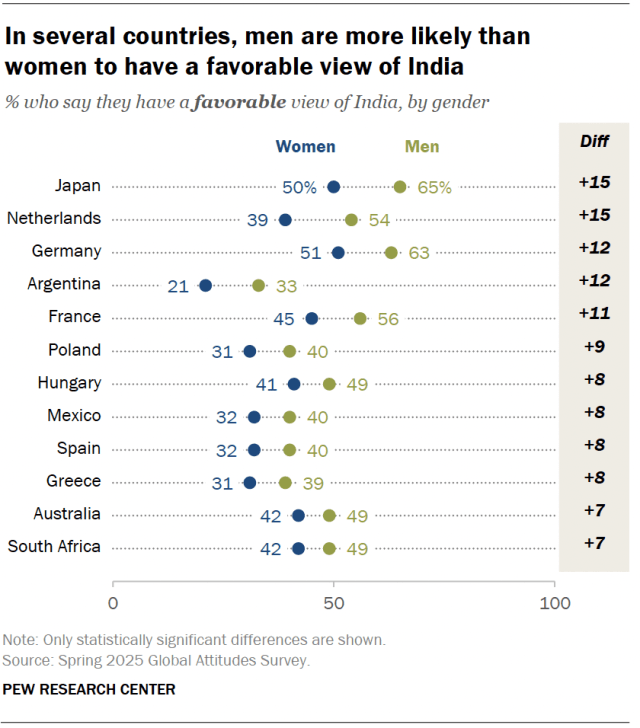
Views by gender
In half of the countries surveyed, men are more likely than women to have a favorable view of India. There are double-digit differences by gender in Japan, the Netherlands, Germany, Argentina and France.
In France, Poland, Hungary, Australia and South Africa, women are more likely than men to say they are unsure of how they view India.
Views by age
Views also vary by age in six countries. In Brazil, the Netherlands, Japan and the UK, younger adults are more likely than older ones to have a favorable view of India. For example, adults younger than 35 in the UK are 20 points more likely than adults 50 and older to have a favorable opinion of India.
But in the U.S. and Australia, the pattern is reversed – older adults are significantly more likely to express a positive opinion of India.
Views by ideology
In five countries, opinion of India differs along ideological lines. In Australia, Nigeria and South Africa, those on the ideological right view India more favorably than those on the ideological left. In the U.S. and Mexico, however, the reverse is true.
Note: Here are the questions used for this analysis, along with responses, and the survey methodology.
